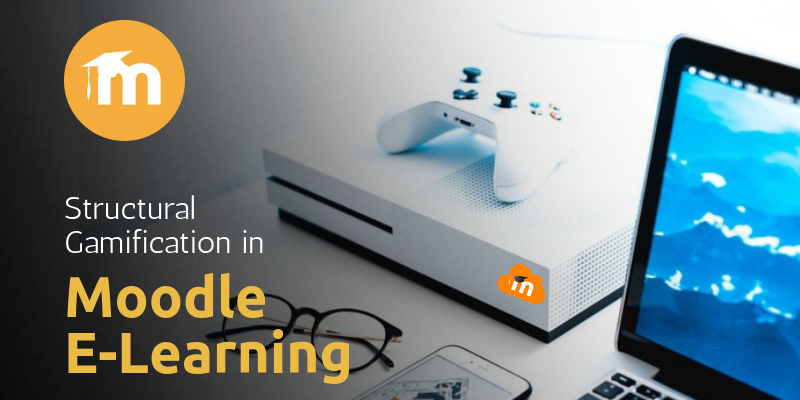
Using Structural Gamification in Moodle E-Learning Platform
Games and education or learning can often be connected as games have changed the way learners conceive reality and interact with each other. Today, the gaming industry is considered to be one of the highest in terms of turnover volumes and increased sales.
Together with this, videogames are now used in learning what we call game based learning or educational videogames. But one emerging trend is to use the techniques and tools in other fields besides entertainment and this is known as gamification.
Appling gamification is a promising line of research nowadays and Moodle LMS uses it successfully to create course materials that have a strong impact on the learners. Education is a field where gamification is used and mainly in the e-learning and lifelong learning.
Moodle and gamification:
Moodle is the most widely used open source LMS and many companies, schools and universities provide their teachers and students with this tool. Moodle has evolved a lot since 2002 and has a big community supporting it. Here in this blog, I will share with you how to apply structural gamification to e-learning by using the Moodle platform.
Motivation is the key factor to keep the learners engaged and games designers know well how to engage the players. The core aim while gaming in Moodle is to import the gaming elements to the online courses.
There are many gaming elements to use, but learning should focus more on students and so the game elements in Moodle should engage and motivate the students instead of distracting them.
Courses that are student centered should provide instant feedback to the students so that they can learn at their own pace. Moodle includes important tools to gamify a course.
Let’s discuss more about the core elements in Moodle for gamification:
Viewing conditions resources and restrict access:
This element allows certain activities to be hidden or greyed until some specific requirements are accomplished. Activity completion needs the students to complete a specific task or obtain a pass grade. Similarly, the date prevents access until or from a specific time and date.
The activity completion should always be enabled by the Moodle administrator. There are two features in the advanced settings: “Enable conditional access” and “Default completion tracking”.
Badges and labels:
To inform the learners about their achievements, labels and badges can be used. Badges are new in Moodle 2.4. They are used to celebrate any big achievement and adding badges to your course allows the teachers to set any criteria and activity completion rules and any message to inform the students about their achievement.
Grade books:
These are tools that Moodle LMS offers to show the grades to the students. They are the best means that the students have in order to track their progress. Teachers can easily edit the grade settings and let the students check their position in comparison to the rest of the class.
Activities: quizzes, workshops, assignments, surveys and etc.
The Moodle activity allows the teachers to create quizzes, assignments with various types of questions, multiple choice, short answer questions and etc. Teachers can also arrange workshops where both the teachers and students can interact. This increases the responsibility of the students and offers relevant feedback.
“To conclude, Moodle is an open learning platform and helps to implement gamification that helps to engage the students in e-learning. Gamification often makes the course more interesting and encourages the students to continue studying.”